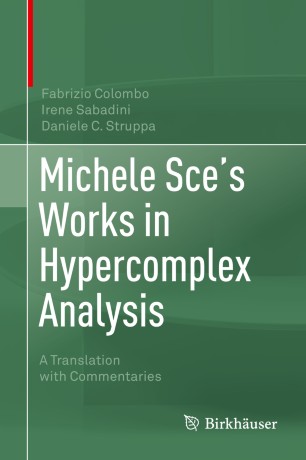

Most ebook files are in PDF format, so you can easily read them using various software such as Foxit Reader or directly on the Google Chrome browser.
Some ebook files are released by publishers in other formats such as .awz, .mobi, .epub, .fb2, etc. You may need to install specific software to read these formats on mobile/PC, such as Calibre.
Please read the tutorial at this link: https://ebookbell.com/faq
We offer FREE conversion to the popular formats you request; however, this may take some time. Therefore, right after payment, please email us, and we will try to provide the service as quickly as possible.
For some exceptional file formats or broken links (if any), please refrain from opening any disputes. Instead, email us first, and we will try to assist within a maximum of 6 hours.
EbookBell Team

5.0
110 reviewsThis book presents English translations of Michele Sce’s most important works, originally written in Italian during the period 1955-1973, on hypercomplex analysis and algebras of hypercomplex numbers. Despite their importance, these works are not very well known in the mathematics community because of the language they were published in. Possibly the most remarkable instance is the so-called Fueter-Sce mapping theorem, which is a cornerstone of modern hypercomplex analysis, and is not yet understood in its full generality.
This volume is dedicated to revealing and describing the framework Sce worked in, at an exciting time when the various generalizations of complex analysis in one variable were still in their infancy. In addition to faithfully translating Sce’s papers, the authors discuss their significance and explain their connections to contemporary research in hypercomplex analysis. They also discuss many concrete examples that can serve as a basis for further research.
The vast majority of the results presented here will be new to readers, allowing them to finally access the original sources with the benefit of comments from fellow mathematicians active in the field of hypercomplex analysis. As such, the book offers not only an important chapter in the history of hypercomplex analysis, but also a roadmap for further exciting research in the field.